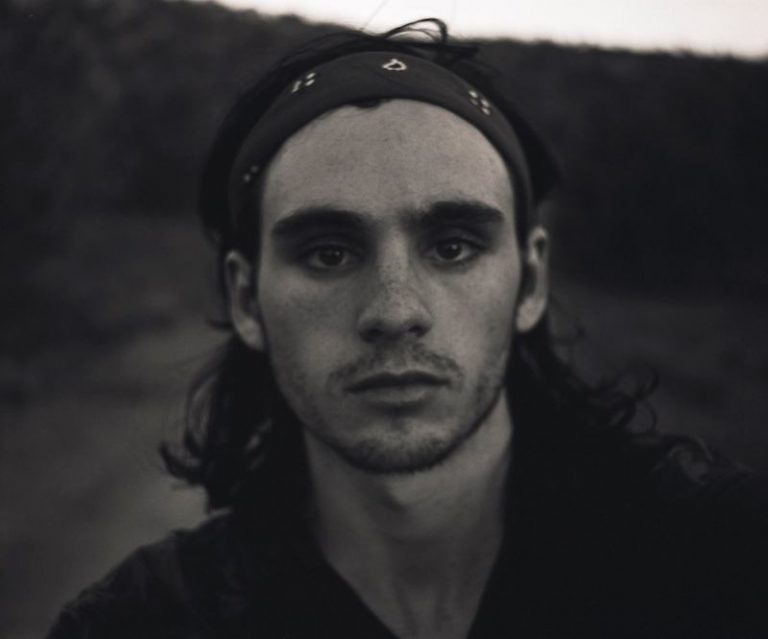Nevan Swanson ’18 Wins Watson to Explore Documentation, Experience, and Memory
By Rebecca Goldfine
To escape the impending Nazi occupation, Swanson’s grandfather made the 300-kilometer journey on horse and buggy as part of a last-ditch effort to secure two visas for himself and his mother to America.
This final chapter in Poland will be the culmination of Nevan Swanson’s yearlong investigation into different ways of documenting, from some of the oldest forms — cave paintings in France and oral storytelling in Tanzania — to one of the most modern, the current self-portrait craze of taking “selfies.”
The Watson Fellowship is a highly competitive $30,000 grant that supports recently graduated seniors for a year of travel. Recipients create their own itinerary to work on independent projects, and are asked to stay abroad for an entire year.
At Bowdoin, where Swanson is a visual arts major and government minor, he has pursued both photography and filmmaking, taking a relentlessly inquisitive approach to his art. In a Watson reference letter for Swanson, Bowdoin Assistant Professor of English Maggie Solberg observes that her advisee “is not nostalgic or sentimental about photography,” and works hard “to understand the mystery of documentation.”
In a recent interview, Swanson said he has for years been absorbed with the ways photographs and films both can “enhance and inhibit the experience you are seeking to retain.” He asks: “How does the act of creating a document interfere with or inhibit the experience itself? How does it heighten the experience? And importantly, how does it influence how that experience lives on in our memory?”
It is to help him respond to these questions — which he calls “lifelong questions” — that he will spend his next year traveling and documenting, with film, photography, writing, and audio recordings, the experiences, places, and people he encounters.
Cave Paintings in France
Swanson will first travel to Vézére Valley to explore its ancient caves with paintings dating back 30,000 years. “The urge to depict, or put into some expressive form beyond the experience alone, that which goes on in our world, is an ancient practice,” Swanson writes in his Watson application. “These caves show an innate desire to tell stories and make them last.” While in France, he will also visit a memoir writing retreat that charges a rather steep fee. Swanson said he’s curious by the notion that “the important stories worth documenting come from those who can afford to tell their stories.”
Selfies in Hong Kong
Hong Kong is among the most smartphone friendly places in the world, according to Swanson’s research. There he plans to “examine how the pervasiveness of such technology influences how people tell stories of their experiences.” He’ll look specifically at the app Snow, a Snapchat rival popular in Hong Kong. “The photograph was supposed to be a document that stays with us, capturing a fleeting moment, and freezing it in time. With these apps, the photograph becomes ephemeral. The idea is radical — the photo is not to keep, but rather to see momentarily, only to have it be lost, like all other moments,” Swanson writes. He will also seek out and interview artist Kingsley Ng, who creates site-specific work, such as a tram that he has converted into a mobile camera obscura. And he’ll spend time with the organization, Our City, My Story, which at one point gave cameras to some of Hong Kong’s increasing homeless population to help draw attention to their plight.
Oral Stories in Tanzania
The country of Tanzania, unlike Hong Kong, is not saturated with smart phones. According to a 2015 Pew Research Center survey, Tanzania ranks 39th of 41 surveyed countries for smartphone ownership. “Given the lack of smartphones in Tanzania, I am interested in the other means of documentation that prevail outside technologically driven documentation, specifically oral storytelling,” Swanson says. In Tanzania, he will seek out scholars and connect with community members to learn about the culture’s oral traditions. He also plans to volunteer with a nonprofit called Teaching and Learning Through Photography, which integrates photography into school curricula.
A Personal History in Poland
It is Swanson’s connection to Poland that holds a clue, perhaps, to his fascination with storytelling, documentation, and memory. When he was in middle school, his grandfather, a Holocaust scholar, developed dementia. “While his memories of his hometown, youth, and experiences fighting in WWII faded with age, he had photographs to help tell his story,” Swanson recounts. His grandfather collected images of concentration camps and ghettos throughout Poland, as well as saved personal photos of his hometown. Swanson plans to return to these sites and re-photograph them. He will also retrace, perhaps by bicycle, the almost 200-mile route his young grandfather took to save himself and his mother from the Nazis.
For Swanson, the act of documenting captures something beyond one’s quotidian experience. “To me, the very essence of taking a picture or writing something down cannot be extricated from the notion that you, the documenter, will not last as long as that which you are creating,” he writes. “Perhaps this idea is what Susan Sontag was referring to when she wrote that ‘all photographs are momento mori.’ This existential underpinning lies beneath the surface of documentation, often serving as a statement: I was here, I did this, I existed.”